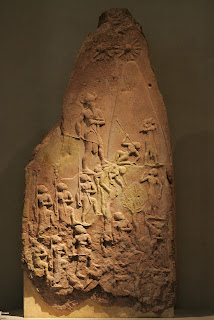Saturday, March 10th, 2012
Boccioni and Bronze (Or, “Is the Artist Rolling in His Grave?”)
This week I have been thinking a bit about the Futurist sculptor Umberto Boccioni. Like other Futurist artists, Boccioni wanted to radically change society and the artistic scene. These artists thought such radical change could be brought about by completely abandoning tradition and heritage (and also advocating war as a “cleansing agent” for society). Even the Futurist Manifesto, written in 1909 by the poet F. T. Marientti, suggested that libraries, museums and academies should be destroyed in order for extreme change to come about in society.
This being said, I think it’s interesting to see what Boccioni did to try and revolutionize the world of sculpture. In 1912, Boccioni wrote to a friend, “These days I am obsessed by sculpture! I believe I have glimpsed a complete renovation of that mummified art.” To me, this “complete renovation” must have included a rejection of traditional artistic mediums (like marble and bronze). If you look at Boccioni’s sculptures, you’ll notice that they are often made out of plaster.
Ah! But I can hear you now, gentle reader. You’re saying, “Wait, but isn’t Boccioni’s most famous sculpture, Unique Forms of Continuity in Space made of bronze?” Yep. Today the sculpture is very much made out of bronze (see below). But this sculpture was cast posthumously, after Boccioni died. Boccioni actually made this sculpture out of plaster. I wonder what he would think about this sculpture being cast in bronze. Would Boccioni be rolling in his grave? Perhaps!

Umberto Boccioni, "Unique Forms of Continuity in Space," 1913. Cast in bronze (originally made of plaster).
In addition to using non-traditional materials, Boccioni also was interested in creating mixed-media sculptures. In 1912 he encouraged other sculptors to follow suit in his publication, Technical Manifesto of Futurist Sculpture. In this manifesto, Boccioni writes, “It is necessary to destroy the pretended nobility, entirely literary and traditional, of marble and bronze, and to deny squarely that one must use a single material for a sculptural ensemble. The sculptor can use twenty different materials, or even more, in a single work, provided that the plastic emotion requires it. Here is a modest sample of these materials: glass, wood, cardboard, cement, iron, horsehair, leather, cloth, mirrors, electric lights, etc.”1

Boccioni, "Dynamism of a Speeding Horse + Houses," 1914-1915. Gouache, oil, paper collage, wood, cardboard, copper, and iron, coated with tin or zinc.
One can get a sense of Boccioni’s eclectic approach to artistic mediums in his sculpture, Dynamism of a Speeding Horse + Houses (see above). If only the artist had lived longer (he died at the age of thirty-five, tragically being trampled by his own “speeding horse” in a calvary training exercise).2 I like to imagine what Boccioni might have created in his later life. Perhaps he would have explored using more unconventional mediums in his painting, too? That would have been fun to see. Boccioni’s paintings are typically oil on canvas creations. (What irony!)
1 Umberto Boccioni, “Technical Manifesto of Futurist Sculpture,” 1912. Found in Robert L. Herbert, “Modern Artists on Art,” (Mineola, New York: Courier Dover Publications, 2000), p. 50. Can be accessed online HERE.
2 Boccioni enlisted in battle when Italy entered WWI. Given that the Futurists were strong advocates as war as a “cleansing agent” for society, it is not surprising that Boccioni enlisted. However, contrary to what is written in Marilyn Stokstad’s “Art History,” vol. 4 (Upper Saddle River, New Jersey: Prentice Hall, 2011, p. 1034), Boccioni did not die in combat. Boccioni died while being thrown from his horse (and subsequently trampled by the animal) during a training exercise. The artist died on August 17, 1916.









